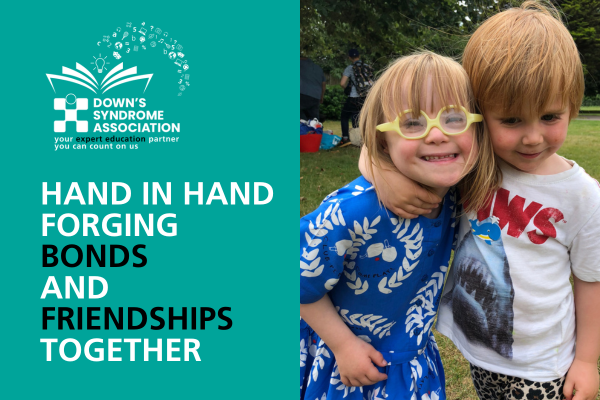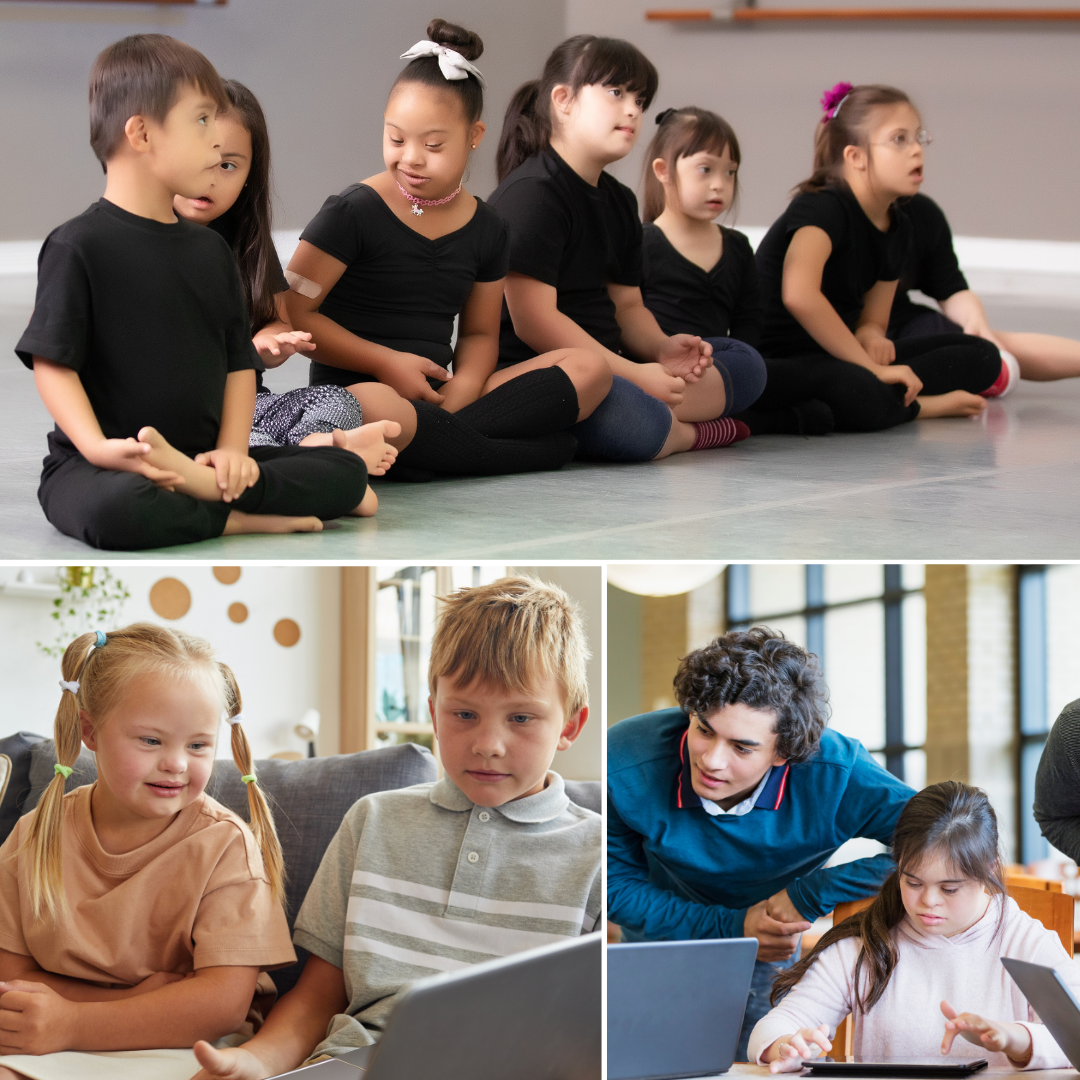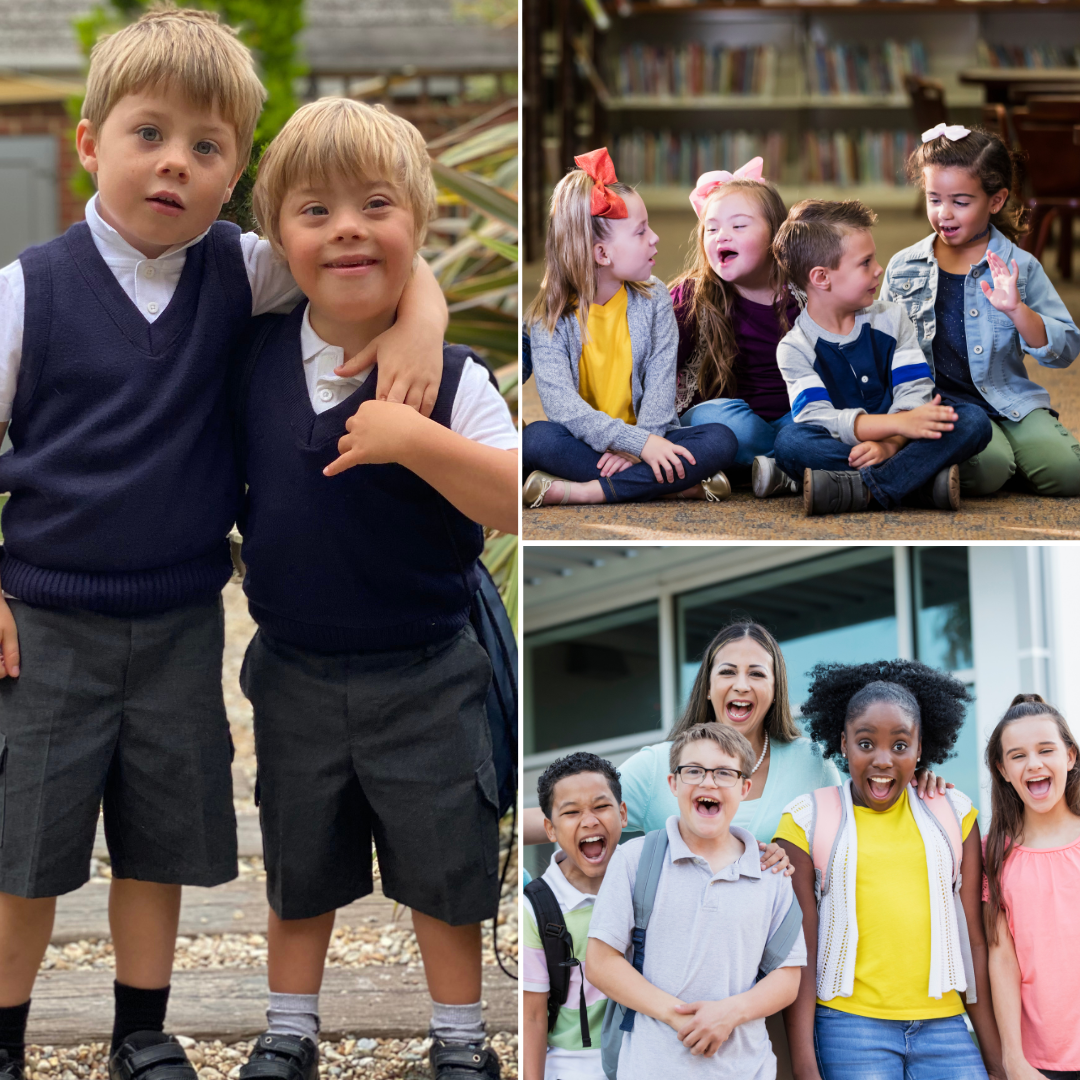Hand in hand – forging bonds and friendships together
There are many benefits to having friendships including:
- Companionship and emotional support
- Positive wellbeing and mental health
- A way to have fun
- Increased sense of belonging
- Sharing interests and hobbies
- Understanding social norms and expectations
- Preventing isolation
- Reduces stress
- Helps build self-esteem
- Learning together
- Having someone to listen to you

These benefits are true for everyone, including children and young people who have Down’s syndrome.
Friendships and meaningful relationships with similar-aged peers are important to them in the same way that they are for anyone else.
If a learner who has Down’s syndrome does not have any friends they can feel isolated and as though they do not belong.
It is therefore important to support them and their peers to develop meaningful relationships.
Top tips
It is important that you do not assume that learners who have Down’s syndrome do not want to make friends or that they do not have the ability to do so, for instance because of their developing communication and social skills.
It may just be that they – and importantly their peers – need some additional support in developing those relationships in a way that works for everyone.
Providing opportunities for ALL children in a classroom to get to know each other is important.
Hold ‘getting to know you’ sessions where children can share something about themselves. Ensure that the learner who has Down’s syndrome is supported to do this if they do not yet have the communication skills to present verbally.
Ensure that you provide lots of opportunities for the learner who has Down’s syndrome to spend time getting to know everyone else in the classroom by working with and alongside them in the classroom.
Ensure the learner who has Down’s syndrome works in different pairings and small groups during the week.

It is important that everyone else in the classroom sees the learner who has Down’s syndrome as a valued participant in the classroom and the whole life of the school.
This will include their participation in school activities (assemblies, sports days, trips etc).
Ensure that the learner’s strengths are highlighted so that they can feel valued and confident in the classroom.
Often friendships form in shared activities, whether formally organised or informal play at breaktime.
It is necessary to recognise how close adult supervision during breaks can suppress the formation of friendships, as children are less likely to want to play with a learner who always has a member of staff by their side or observing them closely.
This may require creative strategies where support is provided, without it resulting in greater exclusion.
Isolating the learner who has Down’s syndrome in separate areas in the school, such as a learning support department or library at lunchtime should also be avoided.
Ensure that appropriate and discreet support is provided to enable the pupils who has Down’s syndrome to join in with their peers in break and lunchtimes.
Opportunities outside school and in school-related activities (such as sports, drama or art groups) can also support the development of friendships.
It may well be that specific activities might need to be planned to facilitate social engagement.
It is important to ensure that all school activities are accessible to all pupils, so that they can take part in activities that they enjoy.
We have discussed how to make whole school activities accessible earlier in this information campaign.
Embed a social skills element into the curriculum for all pupils.
Spend time talking explicitly about friendships and practise skills using role play with the whole class. You can use social stories, visual supports, and social skills groups to provide opportunities to learn and practice appropriate relationship skills. You could also introduce a ‘Circle of Friends’ to support the development of friendships.
Consider how you will teach your pupils about Down’s syndrome.
The Down’s Syndrome Association has useful resources available for assemblies or classroom discussions. If you decide to do this, ensure that the pupil who has Down’s syndrome is present in the room.
Consider developing a classroom behaviour agreement and use this as an opportunity to talk about what good behaviour is and how to be welcoming and inclusive.
Also use this as an opportunity to discuss bullying behaviours and how these are not welcome in the classroom, playground or beyond.
Use the classroom curriculum to teach about diversity and equality, and what this means for friendships.
Consider how disability is included in all aspects of the curriculum so that pupils recognise that disability is not something to be afraid of.
It is useful to provide explicit support for the learner who has Down’s syndrome to develop skills in turn-taking and listening in conversations.
Use repetition and provide opportunities for practice, alongside the teaching of helpful phrases such as ‘can I join in?’.
If they are supported by a Speech and Language therapist, they will be able to make recommendations for activities.
Keep parents informed about developing classroom friendships so that they can support their child to continue their friendships outside of school too, for instance with playdates or party invitations.

